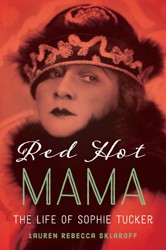The jumping-off point for this biography of the Jewish American actor M.B. Curtis is a relatively minor incident in his life: When the Statue of Liberty was first unveiled in 1886, no funds had been appropriated to light the statue’s torch; Curtis intervened to pick up the tab. The statue must have had personal import to him, Curtis having immigrated to the United States from Hungary at the age of six.
Reading between the lines of Schwartz’s spare account of this episode, we may surmise that Curtis’s act was motivated by something more than simple patriotism: Apparently, Curtis committed to pay the statue’s electric bill for one week only, during which time he and his company were playing an engagement close by, at New York’s Fourteenth Street Theatre. Schwartz does not tell us how much Curtis spent, but it’s reasonable to conclude that his investment paid handsome dividends.
It’s tempting to see Curtis’s career in parallel with that of James O’Neill, whose son Eugene immortalized him as James Tyrone in his masterpiece, Long Day’s Journey Into Night. Curtis and O’Neill were almost exact contemporaries; both came to the U.S. as young children and went on to find fame, fortune, and, in the end, a good deal of misery by playing a single role throughout their careers — O’Neill as Edmond Dantes in The Count of Monte Cristo, Curtis as traveling salesman “Sam’l of Posen” in a number of flimsy plays built around the character.
But Curtis left no issue, much less one whose talent equaled that of Eugene O’Neill. Nor, apparently, have sufficient materials survived to permit an in-depth treatment of Curtis as a man. We are told, for example, that he and his brothers all converted to Presbyterianism as young men, but get no explanation. Similarly, while a significant portion of the book is dedicated to an account of Curtis’s murder trial, it is virtually impossible to discern whether, or why, he was actually involved in the crime. Schwartz does an admirable job of tracking where Curtis went, and when, but comes up short when it comes to why.
Still, the book has value for its exploration of the significance of Curtis’s signature character, one of the first Jewish figures in American literature to transcend common stereotypes and stand on stage as a fully-realized human being. Schwartz also provides valuable insights into the conditions of American show business before the advent of radio, film, and television, when building a national reputation depended on ceaseless touring with a single vehicle. The show didn’t have to change, because there was always an audience who hadn’t seen it yet or was happy to see it again.





